IAC News
IAC News No.109, November 1 2021
Japan Society of Civil Engineers International Activities Center November 1, 2021 IAC News No.109
2021 JSCE Annual Meeting
International Roundtable Meeting
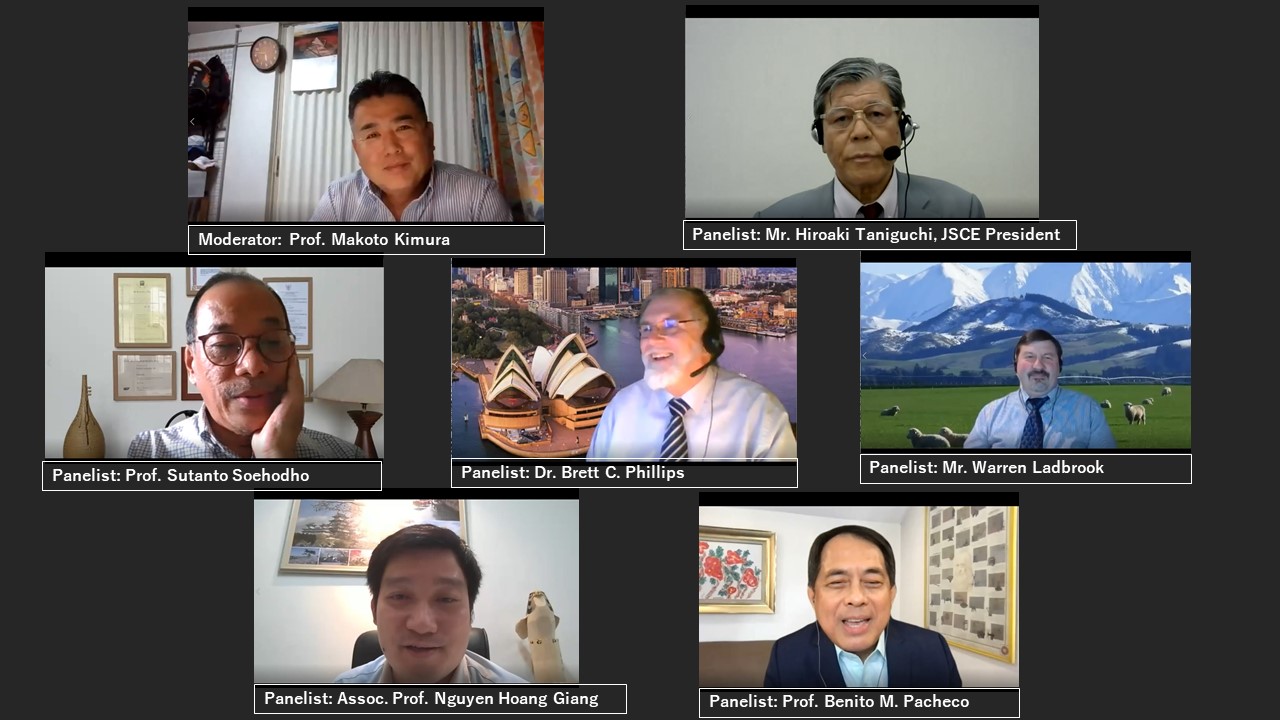
This year’s JSCE Annual Meeting was held online for five days from Monday, September 6 to Friday, September 10, 2021, at Tokai University Shonan Campus due to the COVID-19 pandemic that remains unabated since last year. The Research Discussion Sessions, The 76th Annual Confference, keynote lecture, special lecture, etc. were streamed online, and an online International Roundtable Meeting, which could not be held last year, was also held to connect overseas participants and Tokai University, with interpreters employed to facilitate the event. Under the theme of “Changing Society and Future Infrastructure,” Mr. Hiroaki Taniguchi (The 109th JSCE President), Dr. Sutanto Soehodho (Deputy Governor for Industry, Trade and Transportation, Jakarta, Indonesia), Dr. Brett C. Phillips (former Governor of ASCE Region 10), Mr. Warren D. Ladbrook (ASCE Region 10), Prof. Benito M. Pacheco (University of the Philippines Diliman), and Assoc. Prof. Nguyen Hoang Giang (Hanoi University of Civil Engineering) participated online. While sharing the issues and challenges faced by each country, the participants discussed the infrastructure development required for a society post the COVID-19 pandemic.
Mr. Taniguchi said that in an age of the COVID-19 pandemic and uncertainty, it is important to envision a “big picture” that overlooks the whole of society from a long-term perspective. He explained that envisioning a “big picture” for the public and private sectors and the citizens of the country will help realize future infrastructure.
Dr. Phillips and Mr. Ladbrook explained infrastructure management in Australia and New Zealand from a government level.
Prof. Soehodho spoke on the solicited project proposal and unsolicited project proposal of Indonesian public-private partnership (PPP) projects. According to Prof. Soehodho, in a PPP project, the public sector provides public services, the private sector invests in the project, and the public and private sectors both share the risks.
Assoc. Prof. Nguyen Hoang Giang introduced collaborative efforts between government and academia regarding industrial waste treatment, which has become a problem due to greater urbanization in Vietnam. Apparently, the aim is to shift to a recycling-oriented economy by formulating guidelines, tax measures, and boosting the market for recycled materials.
Prof. Pacheco said that the keys to infrastructure development in an uncertain future are collaboration across disciplines, “foresight” that anticipates the next 10 to 30 years, and “future literacy” that preempts the future by comparing the past and present.
With the impact of the prolonged COVID-19 pandemic, each country aims to establish a safe and secure society by imagining what future society may be while also focusing firmly on the present moment. Civil engineers who are responsible for this task are required to nurture their “foresight” and “future literacy” to preempt the future and continue to envision the big picture.
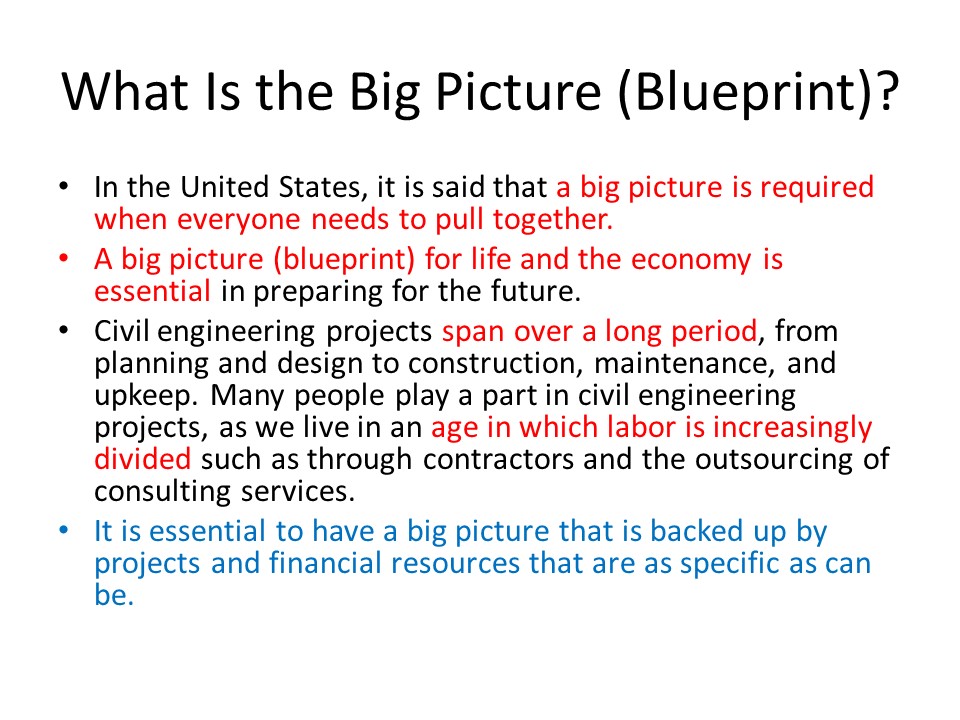
Definition of the “Big Picture”
The Committee on Civil Engineering Informatics
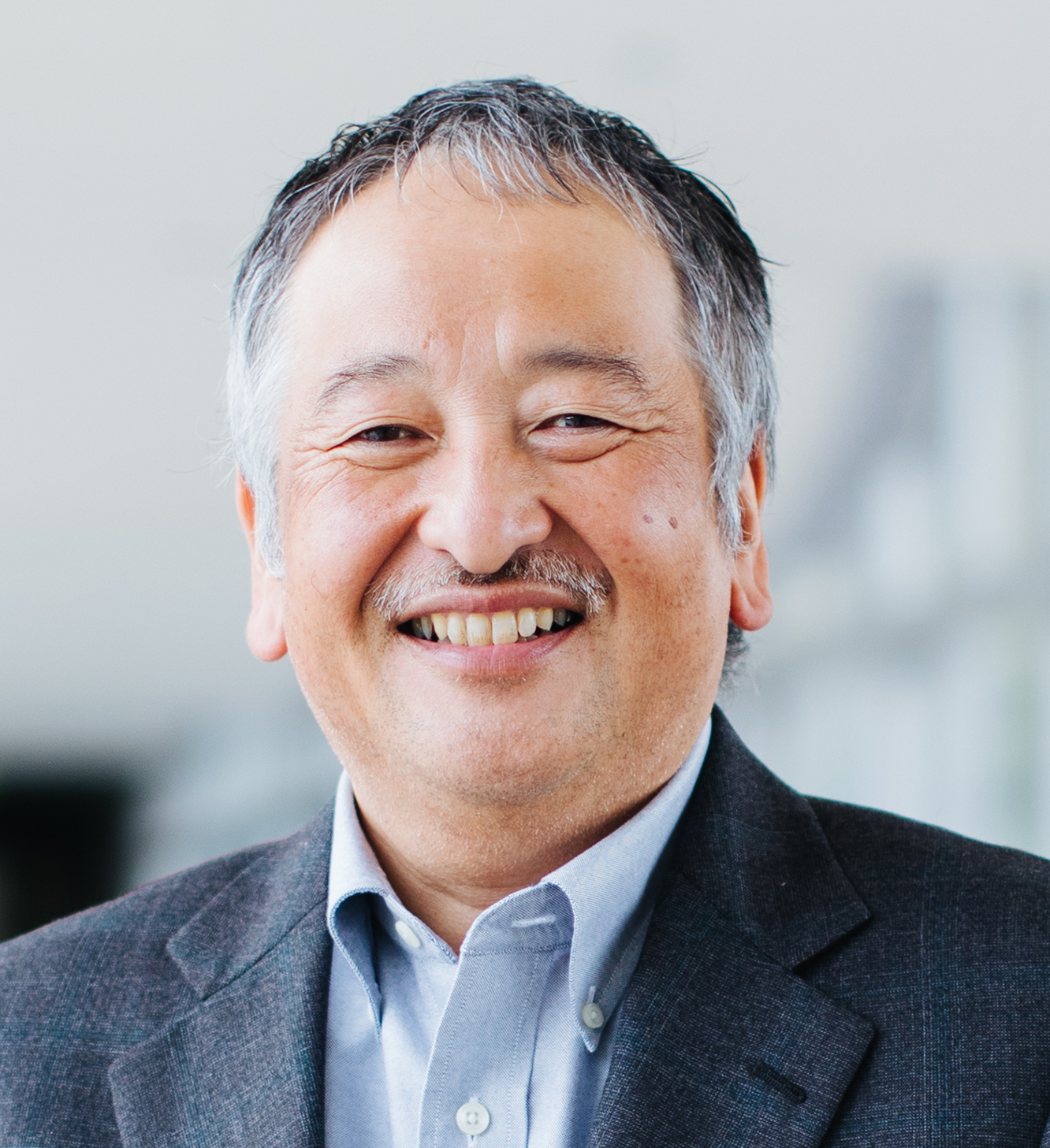
Prof. Koji Makanae
(Chair, Committee on Civil Engineering Informatics)
The Committee on Civil Engineering Informatics, whose predecessor was the “Committee on Computer Utilization” established in 1974, has repeatedly changed its name as IT has advanced, thus evolving into a committee that bears the words “Civil Engineering Informatics.” The Committee on Civil Engineering Informatics conducts activities for the purpose of effectively using information in the civil engineering field through research and promotion of issues in civil engineering informatics.
(1) Research by the Committee on Civil Engineering Informatics
The committee has set up eight research subcommittees to engage in the following efforts as areas to focus research over the mid-term: (1) Utilization of IT that contributes to safety and peace of mind, (2) Optimization of construction processes, (3) Accumulation and utilization of infrastructure information, (4) Construction of infrastructure monitoring and maintenance management systems, (5) Utilization of open infrastructure data and big data, (6) Contributions to intelligent transportation systems, (7) Research on advanced IT with the future in mind. In recent years, the adoption of BIM in the infrastructure field has advanced internationally, and while the Government of Japan has taken the initiative in promoting BIM/CIM in Japan, there are still many practical issues. Researchers and engineers from various positions gather within this committee to discuss the utilization of BIM/CIM, solving issues, and plans for the future. The committee is also actively engaged in research in the rapidly evolving areas of AI, IoT, open data, etc.
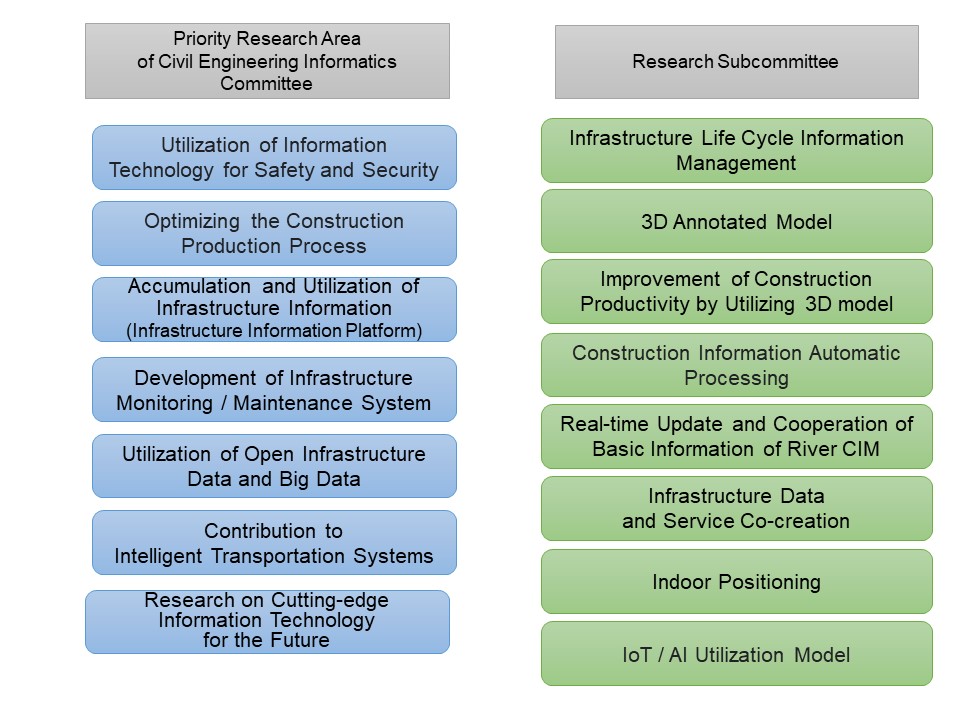
Priority Research Areas and Subcommittees
(2) Support for Educational Development of Civil Engineering Information Processing
To utilize ICT in a more sophisticated manner in civil engineering projects, civil engineers themselves must acquire knowledge and skills related to ICT. To encourage the studying of civil engineering informatics in the classroom, the committee published “Civil Engineering Informatics - Basic Level -” as a textbook in 2017, and started offering online courses on JMOOC from 2019.
(3) Providing Opportunities for Academic Exchange
A civil engineering informatics symposium is held every fall as an opportunity for research presentations on civil engineering informatics and exchanges between researchers and engineers. In 2021, while the event was held online just like it had been the previous year, there were 87 presentations and lively discussions by participants. Furthermore, the Journal of Japan Society of Civil Engineers F3 Special Issue, which contains peer-reviewed papers based on presentations at the symposium, is published every year.
Regarding international exchange, the committee participates in the International Society for Computing in Civil and Building Engineering (ISCCBE), and in 2017, the committee held the International Conference on Computing in Civil and Building Engineering (ICCCBE) in Osaka. In addition, the Japan Society of Civil Engineers has led the establishment of the Asian Civil Engineering Informatics Group, and with the support of JACIC, it has held the International Conference on Civil and Building Engineering Informatics (ICCBEI) every two years since 2013. The 4th ICCBEI conference in 2019 was held at Sendai Mediatheque (Sendai City), and more than 100 researchers from 20 countries participated in lively discussions and exchange. While the conference scheduled to be held in Hong Kong in 2021 is expected to be postponed to 2023 due to the impact of the COVID-19 pandemic, the committee will continue to support the promotion of exchange between researchers mainly in Asia.
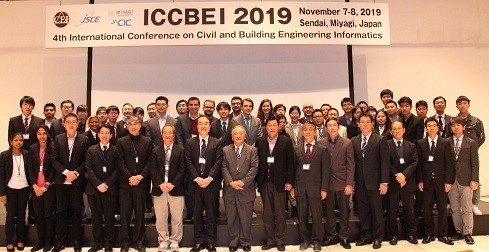
ICCBEI 2019(Sendai Mediatheque, Miyagi, Japan)
【Reported by Koji Makanae (Chair, the Committee on Civil Engineering Informatics】
Phase One of the Yangon Port Expansion Project in the Thilawa Area
Myanmar: A Country undergoing Drastic Changes
A general election was held for the first time in 20 years in November 2010, and the shift from military to democratic government was made in March 2011. The new economic policy invited large foreign investments, and the Myanmar was called Asia’s Last Frontier. After the general election, NLD (National League for Democracy) led by Aung San Suu Kyi took power in March 2016, and democracy in Myanmar was further accelerated. However, due to the outbreak of the Covid-19 pandemic from 2020 and the internal conflict and political crisis in February 2021, Myanmar is now facing the difficult situations. Early return to normal life in Myanmar is awaited.
Container handling volume at Yangon Port was rapidly increased from 0.35 million TEU in 2011 to 1.03 million TEU in 2017. Thilawa SEZ with 2,400 hectares was first planned in the late 1980’s, and for the last 10 years the SEZ has been developed by Japanese PPP scheme. The Government of Japan provided support not only to port facility but also in various sectors such as power development, supplying water, roads, bridges, and relocation of residents. In addition, MJTD (Myanmar Japan Thilawa Development Limited) was set up with three Japanese trading companies and a local company to take charge of the development and operation of the SEZ, which established the logistic system and infrastructure for Japanese companies to move in.
Outline of This Project
As the port facility in Thilawa, short construction period demanded by rapid economic growth and anti-sedimentation measure for the river port susceptible to high turbidity and a large range of tides were the urgent issues. Furthermore, due to existence of the Sagaing Fault that runs across the country in the north-south direction and the devastating catastrophe caused by Cyclone Nargis in May 2008, port in Thilawa was expected to be functioned as a disaster prevention facility.
The Project applied jacket structure to the jetty and seismic isolation system to the quayside gantry crane, which are the examples of exporting the high-quality Japanese infrastructures. The jacket method enables shortening of the construction period by carrying out offshore and land constructions simultaneously, though high precision is required for manufacturing the jacket superstructure and piling the steel pipe piles. The jacket jetty does not obstruct the river flow thanks to the less pile points, example of which is the Runway D of Haneda Airport situated at the mouth of the Tamagawa River.
We vigorously hired and educated Myanmar staff as a part of technology transfer. These engineers are now working as strong work forces in both Myanmar and outside. The Project was praised as not only high-quality infrastructure but also thorough safety management. The Project completed without delay and major accidents. Furthermore, we believe that visits by a wide range of people from the public and private sectors, such as many senior officials including ministers and deputy ministers of both Japan and Myanmar, individuals of private companies, and university professors and students, also contributed to raising awareness of the project as a Japanese project. We would like to take this opportunity to express our thanks to everyone involved in the Project.
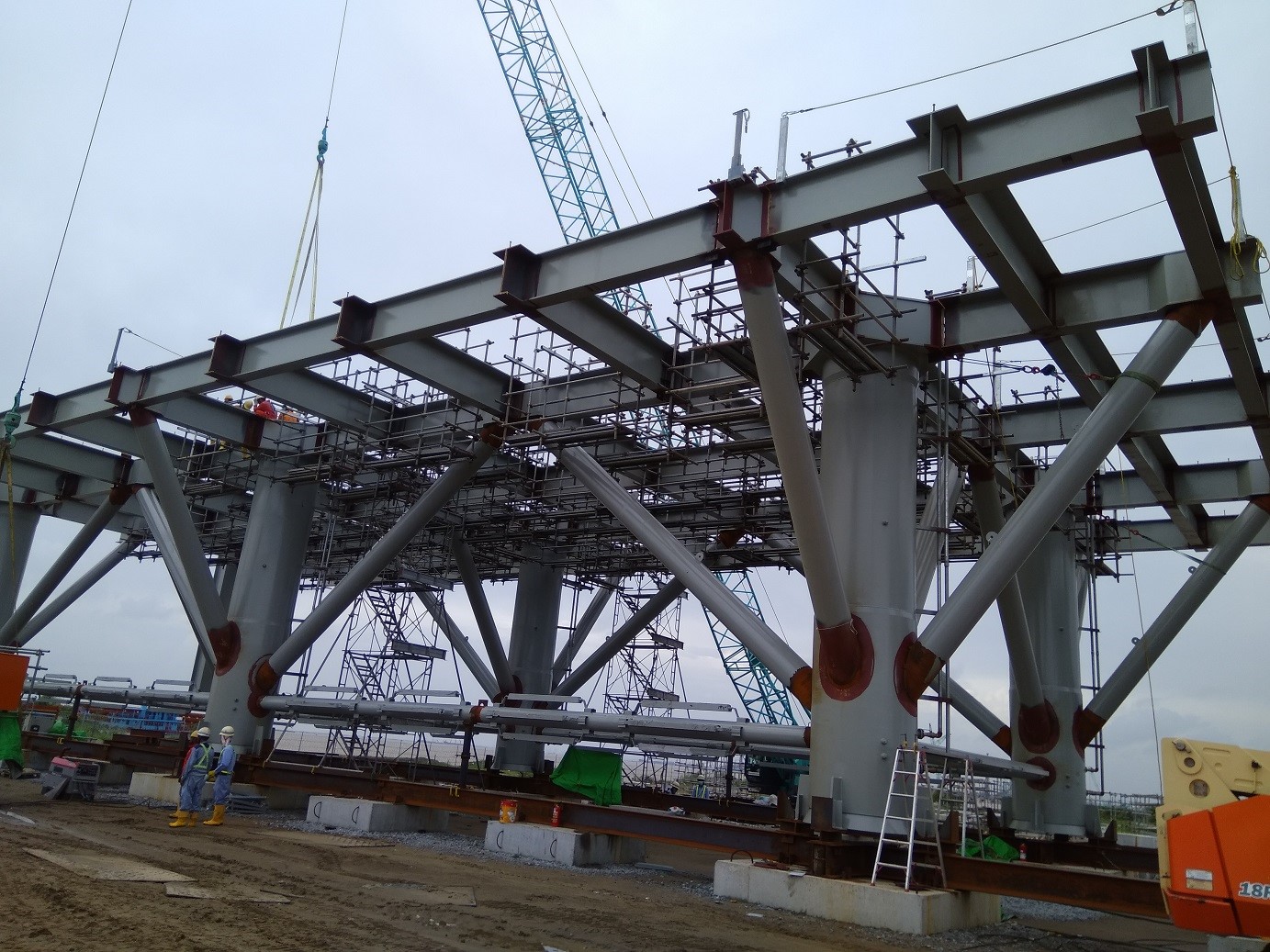
Fabrication of Superstructure of Jacket Type Jetty
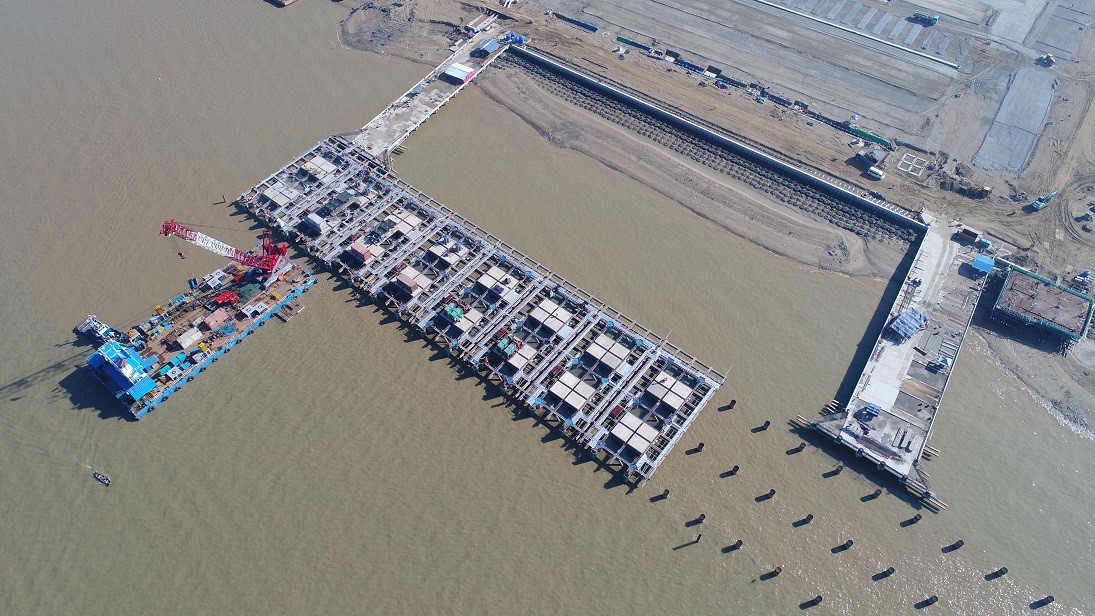
Drone Photo of Jacket Type Jetty Construction
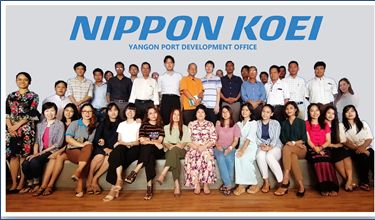
With Myanmer Staff
【Reported by Kentaro Kimura (Nippon Koei Co., Ltd.)】
2021 ASCE Bridge Photo Contest
It is a great news! Ms. Kumiko Yoshii of Advanced Construction Technology Center (ACTEC) won the second place in the category All Bridges of 2021 ASCE Bridge Photo Contest. ASCE has recognized amazing photos of bridges in some categories since 2013. It is the 9th contest this year; 425 entries were made and 175 photos out of those entries were submitted to the All Bridges. Ms. Yoshii’s photo “Ootaki Bridge” won the second place in that category, which has only the first and second places. It is the very first time that a Japanese photographer was recognized in the nine-year history of the award. Congratulations, Ms. Yoshii.
2021 ASCE Bridge Photo Contest: https://woobox.com/7p2r7v
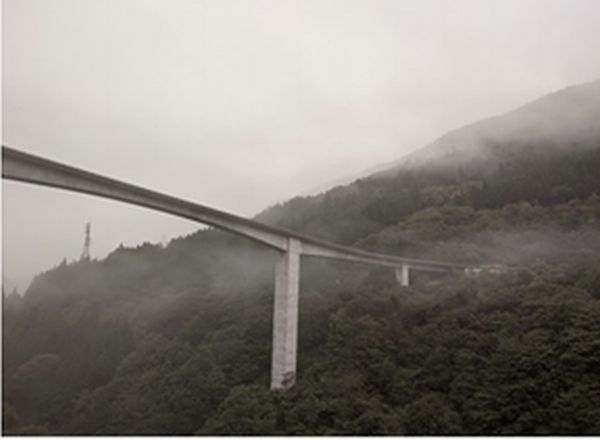
Second Place Ootaki Bridge
Photographer: Kumiko Yoshii
【Reported by Hiroshi Dobashi. JSCE Fellow,
President, ASCE Japan Section】
Updates
- Japanese Civil Engineers the Global Leaders Symposium Series No.19 (November 9)https://committees.jsce.or.jp/kokusai/node/234
- 【YouTube Video】FY2021 Int'l Roundtable Meeting
English: https://www.youtube.com/watch?v=LDrr5zqJ4c8
Japanese: https://www.youtube.com/watch?v=0A5ScjsHwKo - 【YouTube Video】JSCE- Faculty of Engineering, Kasetsart University Joint Seminar
https://www.youtube.com/watch?v=sMK-6E33lzQ - Japan's Infrastructure Grades 2020 & Introduction of Maintenance Technologies
https://www.jsce-int.org/node/733 - Japan Construction International Award
https://www.mlit.go.jp/JCIA/en/ - 31 CONGRESO NACIONAL DE INGENIERIA CIVIL: https://congresocicm.com/en/
- American Society of Civil Engineers(ASCE)
・International Conference on Sustainable Infrastructure(December, 2021)http://app.message.asce.org/e/es?s=1360&e=713080&elqTrackId=f2b02296aa9c4f699603ed9d506586f4&elq=5dbc17091cf64c9faaaae1d65ba9cab2&elqaid=26738&elqat=1
・ASCE Lifeline Conference 2021 2022
Dates updated: Jan 31-Feb 4, 2022
https://samueli.ucla.edu/lifelines2021/
・Joint Japan-US Symposium on Assessment, Management, and Governance for Infrastructure Resilience
*Pre-recorded Presentation Available on the Website.https://www.infraresil.jp/event/01/ - The International Infrastructure Archives
– A Compilation of Japan’s Greatest Projects in Transfer of Civil Engineering Technology in Service –
http://www.jsce.or.jp/e/archive/ - IAC “News Pick Up!!” on the JSCE Japanese website
https://committees.jsce.or.jp/kokusai/iac_dayori_2021 - Summary of featured articles in JSCE Magazine Vol. 106, No.11, September 2021
http://www.jsce-int.org/pub/magazine - Journal of JSCE
https://www.jstage.jst.go.jp/browse/journalofjsce
IAC News Subscription
The IAC News is one of the communication tools to share information and ideas with the members. We would like to invite you, your friends and colleagues to join the communication and to subscribe the IAC News. Please register online: (http://www.jsce-int.org/node/150). We look forward to meeting you.
